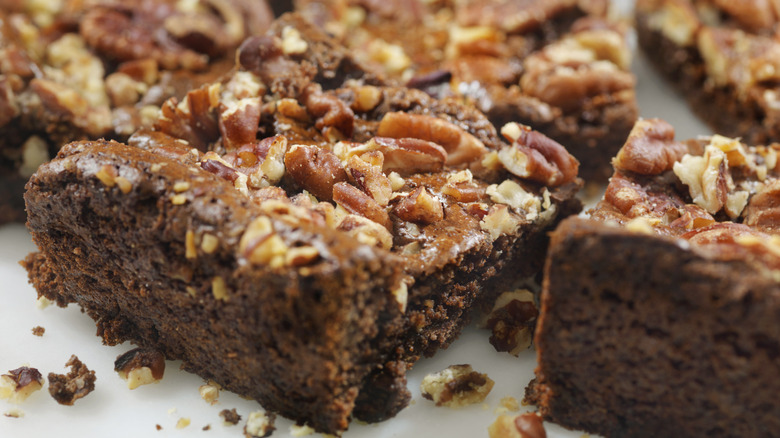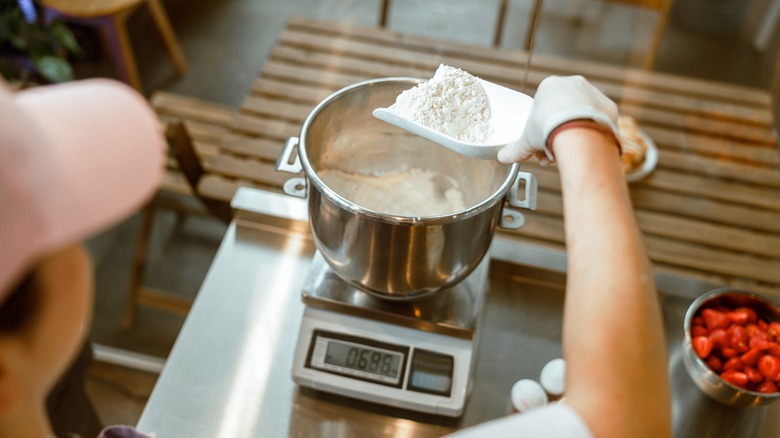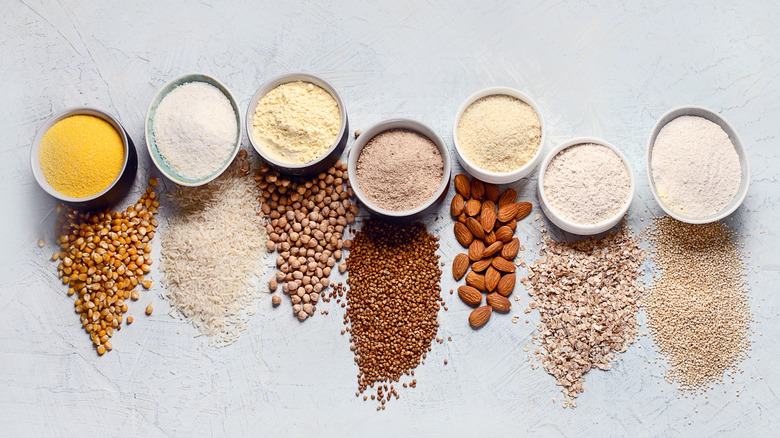The Flour Measuring Tip You Need To Remember For Gluten-Free Cake
Those who follow a gluten-free diet may have noticed that many ready-made selections are becoming more and more common in bakeries and grocery stores. But, for those looking to make their favorite gluten-free cakes and cookies at home, it can be a frustrating process to recreate the treats. It involves a bit of math, since you can't simply get the same results when substituting one cup of all-purpose flour with one cup of gluten-free flour. A big reason for this is that flours made from different ingredients have different weights, even though they visually appear to be the same quantity.
There is an easy way to counter this issue, and it is a trick that professional bakers rely on — measure by weight, not by volume. Baked goods made with ingredients measured by weight result in far more consistent outcomes. And when you are no longer beholden to volume measures in terms of cups and spoons, you are free to use any vessel you have on hand, as long as you have a weighing scale. Thanks to the growing awareness of the tool's dependability, you can purchase one for your kitchen for as little as $10.
How to measure flour by weight
If you are used to working with flour by merely scooping it out of the package with a measuring cup, you may be wondering how to go about measuring flour by weight. First, try to seek out recipes that list ingredients by weight in the first place. Unlike old recipe books that only listed cup and spoon measurements, times have changed and many modern baking recipes tend to be developed with weights noted.
The best and easiest way to measure ingredients for a gluten-free bake recipe (or for any type of bake at all) is to use a single large bowl on the weighing scale, and make sure that the scale is set to zero before adding a new ingredient to the bowl. This process is called "taring" and helps to greatly reduce the amount of bowls used when preparing batter for a bake.
The reason why weighing is so necessary for gluten-free flour is because readily available gluten-free flour blends are made up of different whole-grain flours and white starches that all have different weights. Depending on the brand, manufacturers will use different types of flours and starches in different ratios in order to reflect the different properties of wheat flour. The safest way to account for this variety of blends and weights is to simply measure by weight and not by volume.
More tips when baking gluten-free goods
Other than measuring by weight, there are other simple and easy tips to help ensure success with gluten-free baking. First, add a little bit more liquid to the batter. This is because non-wheat flours tend to be finer and absorb more liquid than wheat flour. Many recipes specifically developed to be gluten-free require more liquid, resulting in batters that are looser. Secondly, gluten-free batters benefit from even more mixing compared to wheat flour. This helps distribute the ingredients more evenly and create better structure. Additionally, because you do not have to worry about gluten development, more mixing will not make the end product tougher.
Then, possibly the easiest tip of them all, is to rest gluten-free batters and doughs for at least 30 minutes so that the flour has enough time to thoroughly and properly hydrate. This will help prevent baked goods that are sandy or gritty. Whatever tips you incorporate, just remember to use up these flour blends quickly or to store them properly, as gluten-free flour tends to spoil much quicker than wheat flour.


